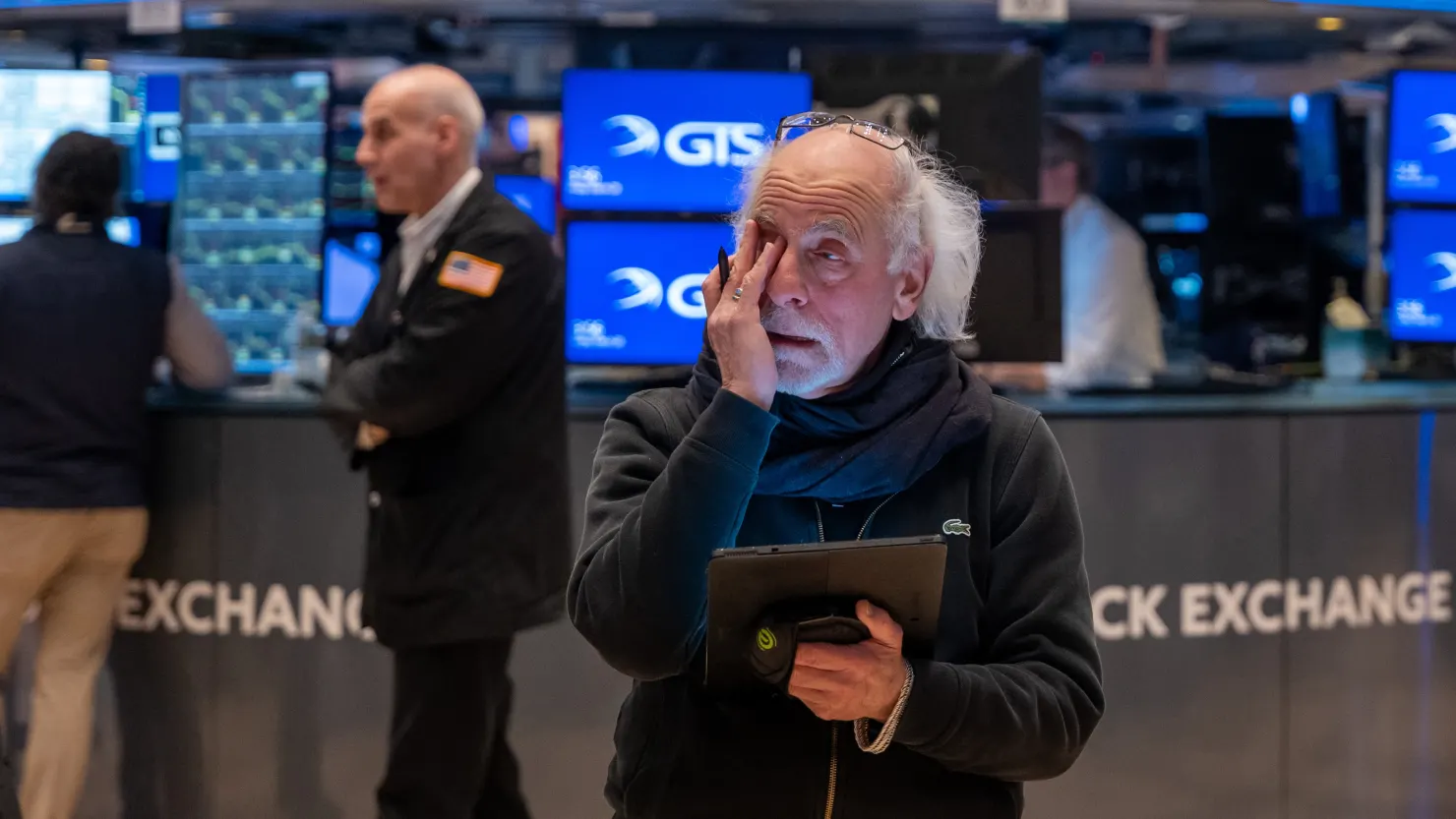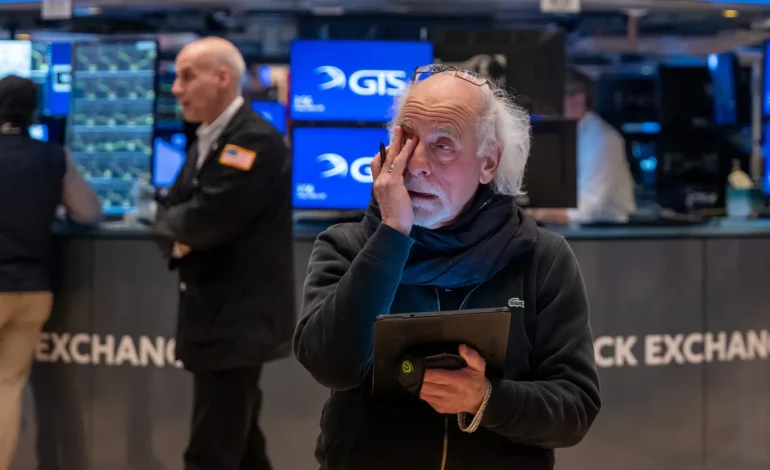CNBC, AP, Reuters, and Business Insider contributed to this report.
US stocks slid again on Tuesday as investors backed away from pricey tech and AI names — and even bitcoin — sending the market into a risk-off mood.
The Dow Jones Industrial Average fell about 326 points, or 0.7%, after being down nearly 700 points at its intraday low. The S&P 500 slipped 0.3%, putting it on track for a fourth straight loss, its longest losing streak since August. The Nasdaq Composite dropped roughly 0.6%.
The pullback was led, once again, by the same stocks that powered this year’s rally.
Big Tech and AI plays were the main drag:
- Nvidia fell more than 1%, extending its slide to about 9% for the month ahead of its closely watched earnings report due Wednesday after the close.
- Fellow “Magnificent Seven” members Amazon and Microsoft each slumped around 3%.
Nvidia has been at the center of the debate over whether the AI boom has gone too far, too fast. Its chips are the backbone of the AI buildout, but its share price has more than doubled in multiple years and briefly helped push the company above a $5 trillion valuation.
Now, investors are asking a tougher question: When do all these billions in AI spending actually turn into profits?
Sam Stovall, chief investment strategist at CFRA, said an 8%–9% pullback in the S&P 500 “when all is said and done” wouldn’t be surprising. He added that upbeat earnings from Nvidia and mildly weak (but not recessionary) employment data could cut the correction short, but that “monetizing all of this capex” isn’t going to show up this quarter.
Even good AI news wasn’t enough to turn sentiment. Startup Anthropic announced a huge deal to spend $30 billion on Microsoft’s Azure cloud, with Microsoft and Nvidia kicking in billions in fresh investment. In the past, headlines like that might have lit a fire under AI stocks. This time, Microsoft and Nvidia stayed firmly in the red.
“We’re going through a natural digestion of gains,” one strategist said, adding that something new will have to happen to convince investors they panicked too early.
The risk-off tone wasn’t just in stocks. Bitcoin briefly dropped below $90,000, touching around $89,000 at one point — its lowest level since April — before bouncing back above $91,000 later in the session.
The world’s largest cryptocurrency is now down for the year after having set a record above $126,000 in early October. That slide is unnerving some investors because many of the same traders who ride high-growth tech also hold large crypto positions. A sharp crypto pullback has, in the past, foreshadowed broader selling in speculative assets.
On top of the day’s moves, a couple of key indicators are making traders uneasy:
- The S&P 500 fell below its 50-day moving average for the first time in 138 trading sessions, ending its longest run above that level since 2007. Technicians see that break as a sign that momentum is weakening and a further test of lower levels — including the April lows — could be ahead.
- Cash levels among big global fund managers have dropped to around 3.7%, according to one major survey — historically a “sell” signal. Each time cash has been that low since 2002, stocks have tended to fall while Treasurys outperformed over the following 1–3 months.
Some on Wall Street are openly talking about a bigger shakeout. Top bank executives have floated the possibility of a 10–20% drawdown in stocks over the next year or two, especially if the AI trade cools.
Still, others argue that a single-digit pullback would be “not unhealthy” after a yearslong rally.
Wednesday’s Nvidia earnings are shaping up as a key moment for the market. Because Nvidia is so large, its movements can swing the entire S&P 500.
If Nvidia delivers strong numbers and stays upbeat on demand for AI chips, it could help calm nerves about frothy valuations and heavy capital spending on data centers. If it disappoints — or guides more cautiously — it could reinforce fears that the AI boom is outpacing real returns.
Elsewhere in earnings:
- Home Depot dropped more than 4% after missing profit estimates and cutting its full-year outlook. The company cited a lack of storms, “consumer uncertainty” and ongoing pressure in housing as drags on demand.
- Other names, like Energizer, Helmerich & Payne and Klarna, also saw big moves after their reports, with Energizer on track for its worst day on record after a weak outlook partially blamed on tariffs.
On the economic front, fresh labor market data showed layoffs picking up modestly, but an earlier government shutdown has left several weeks of official data missing. That lack of clarity is making it harder for traders to feel confident that the Federal Reserve will cut interest rates again in December.
The Fed has already trimmed rates twice this year to support a cooling job market. But inflation is still above its 2% target, and policymakers are wary of cutting too aggressively.
Not everything was doom and gloom:
- The Russell 2000, which tracks smaller U.S. companies, actually rose about 0.8% during the day, bucking the big-cap decline.
- Market breadth was mixed: even with the S&P 500 lower, roughly half the index’s stocks were up, and an equal-weighted version of the index was only slightly negative.
Still, the CBOE Volatility Index (VIX) — Wall Street’s “fear gauge” — climbed to a one-month high, a sign that investors are paying up for downside protection.
For now, the message from markets is pretty clear: after months of AI euphoria and relentless gains, Wall Street is finally hitting the brakes — and watching Nvidia’s next move very closely.









The latest news in your social feeds
Subscribe to our social media platforms to stay tuned